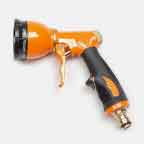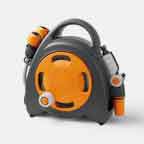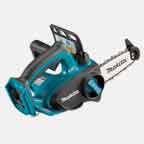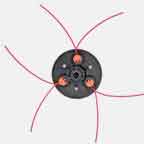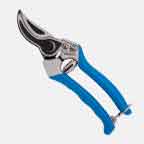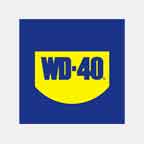CutAbove Tools
What to look for in garden tools
There are many things to consider when purchasing a pruning (or gardening) tool. Obviously you need to consider what is required to be done and how often you are going to be doing it. However, any expert will tell you to get yourself a quality tool.
There are five main things to consider when purchasing a tool:
- Size of the tool – particularly important when selecting secateurs. If you have a small hand look for a smaller sized item that fits snugly into your hand.
- Weight of the tool – in the case of loppers, hedge shears and high reach pruners you are holding these in front or above you for extended periods of time.
- Extension – do you need a tool that extends? Extending anything will only add weight to the tool however if it stops you using ladders then seriously consider it.
- Mechanical Advantage – if you have some tough work to do then ratchet systems and gear action systems will assist.
- Spare Parts – spare a thought for the environment and before you purchase check out how readily spare parts are.
Gardening can be an enjoyable time for those with the right tools but at the same time can be quite arduous if you are using the wrong tool.
There are probably three types of gardeners:
- those who are happy to be out there every day,
- others that get motivated every so often, and
- those who are out there because they need to.
In all instances, it is important to have the right tools to make the job as easy and as pleasurable as possible.
The first step is to look at the job at hand. For instance, when pruning, do you need a pair of secateurs (small stems), loppers (branches) or shears (hedge)? If the work to be done is green and live (on the plant, shrub or tree), and you can fit it in the jaw of the tool in question then you are likely to have the right tool (dependent on your strength).
If you are struggling on each cut, it is recommend going to a bigger device. For example, select a small lopper rather than a pair of secateurs. If the greenery is dark and hard, it is better to select a larger tool or use a pruning saw.
Hedge shears are a little different in that a lot of things can fit into the jaws however they are not going to effectively cut much more the size of a lady’s little finger, without damaging the blades or causing them to bow. However if the foliage is light you are going to cut much more in a quicker time.
It is important to note that one tool is not going to do everything in most gardens. You will need a range of tools of tools. So again we need to look at the job at hand to decide what is required. For example if you have only roses then you may only need a pair of bypass secateurs, a pruning saw and tools to cultivate the earth and remove weeds.
So once you have decided what tools you require then you need to consider the following factors when selecting a tool:
- Size
- Weight
- Reach
- Mechanical Advantage
- Availability of Spare Parts
Size: big is not always better! For example, a pair of secateurs that are too big will not fit nicely in the hand and you will barely get your thumb over the top handle. A smaller pair that can fit snugly in the palm of your hand will assist with leverage.
Weight: is related closely to size particular with items such as loppers and hedge shears. It is no good getting a big heavy lopper, just because you want to cut something big, if you can’t lift the tool for a good length of time. Our recommendation is to hold the device at shoulder height for a while to assist with your decision making. The devices may include hedge shears, loppers or mechanical pole saws.
Reach: many tools now have extensions to stop you having to get on a ladder. Consider these again with the weight of the item in mind. Obviously a tool that extends is likely to be heavier. In addition there are extension handles for garden tools (such as hand trowels and cultivators) that save you from bending and kneeling in the garden. There is also a number of stand up weeders available again to save the back and kneeling on the lawn.
Mechanical Advantage: many of us are familiar with Ratchet Systems that save approximately 30% of your effort. The advantage of ratchets is easier cutting, you can cut thicker stems with less effort and they are good for those with tendonitis or arthritis. Also ratchet high reach pruners can make life a lot easier.
The downside of the ratchet systems are that it takes longer, and they are not really suitable for fine work (cutting flowers) Blades can be prone to breakage if twisting during a cut. Typically on the market you will find there are ratchet secateurs and ratchet loppers.
The other type of mechanical advantage is Gear Action. These tools save about 10 – 15% of your effort with the stem or branch being cut in one go. Gear action design may be found in secateurs, loppers and hedge shears.
Spare Parts: the availability of spare parts is very important. Most tools are put together by hand and apart from a new blade or spring, you may need a nut or bolt that may come loose. In terms of sustainability, if you chip a blade or wear out a spring, or lose a nut or bolt, we don’t want people discarding their perhaps favourite tool or searching fruitlessly at the local hardware shop. A good tool company should have a comprehensive range of spare parts for the products they sell. So ask about spare parts when making your purchase.
In summary, make gardening as easiest as possible and take appropriate time in selecting your tools. Look at the features and benefits of each tool compared to the plants, shrubs and trees in your garden. If you can touch, feel and even cut some stems with the tools prior to purchase it will help with your decision making.



